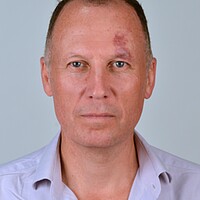Proposed Islamic art museum divides Venice
Loading...
| Rome
For hundreds of years Venice was at the crossroads between east and west, alternately trading with and then fighting against the Ottoman Turks for control of the Adriatic and the Mediterranean seas.
Venice grew rich from buying spices and textiles from the Middle East and selling them to the rest of Europe for a tidy profit, while at the same time enthusiastically taking part in the Crusades against the Saracens. A cosmopolitan trading hub, it was known as The Most Serene Republic.
Centuries later, the lagoon city’s attitude toward Islam appears as undecided as ever, as evinced by reactions to a proposal to open a museum of Islamic art in a grand palazzo on the banks of the Grand Canal.
The initiative was announced by Enrico Letta, the prime minister of Italy, during a diplomatic and trade visit to Qatar this month.
Speaking in Doha, Mr. Letta said the Italian government had "made a commitment to explore the opportunity to build an Islamic museum in Venice on the Grand Canal." He gave few further details.
But as the news filtered back to Venice, it caused a furor, in particular with the Northern League, a conservative political party that has in the past campaigned for the rich north of Italy to secede from the rest of the country.
The League, which has a track record of xenophobia and opposition to multiculturalism, counts Venice and the surrounding region of Veneto as strongholds.
“If they try to do this then we will camp out in front of the site day and night and obstruct the work,” says Lorenzo Fontana, who represents the League in the European Parliament in Brussels.
“We’ll sleep there and eat there, they’ll have to take us away by force, and when they take us away, we’ll simply return. The Veneto [region] wants independence, not Islamic museums.”
Luca Zaia, the regional governor and a senior member of the League, said he found it hard to believe that Italy's government had money to “throw away” on an Islamic museum when Venice had so many other problems such as rising sea levels and crushing numbers of tourists, both of which threaten its cultural heritage.
“I’m amazed that with all the problems that Italy has, from sky-high unemployment to businesses closing down because of excessive taxes, and the worst economic crisis since the Second World War, that they could even think of putting money into a new, useless museum. Is this really the priority?” he told Ansa, Italy’s national news agency.
"Zero cost" to Venice
But the museum project has received enthusiastic support in other quarters.
The creation of the museum would be an expression of Venice’s “openness to dialogue between cultures and religions," said Giorgio Orsoni, the city's mayor.
He said the Northern League was wrong to think that taxpayers would be on the hook; the museum would come at “zero cost” to Venice because it would be entirely financed by Qatar, Mr. Orsoni claimed.
If approved, the museum would probably be established inside an empty palazzo near the famous Rialto Bridge, which arches over the Grand Canal.
“I think it would be a splendid idea and would provide a boost for culture and tourism in Venice and the Veneto region,” said Nereo Laroni, a member of Venice city council who is responsible for international relations.
The museum plan dovetails with Venice’s goal of attracting more cultural institutions and international organizations in order to ease the city's heavy reliance on tourism, which provides jobs but overwhelms ordinary life in the city and turns it into a sort of architectural Disneyland.
“Venice will always need its tourists, but tourism should be seen as a resource and not become a stranglehold,” says Antonio Armellini, a former ambassador who now serves as a special advisor to Venice.
The city needs more museums, educational institutes and research bodies in order to stem a population exodus and diversify its reliance on tourists, Mr. Armellini says.
“The diminishing [local] population causes an even faster atrophying of the service sector. Every day a grocery shop, a tailor, or a bookshop risks closing down to make room for a shop selling Murano glass made in China or masks for the carnival, which in the minds of some tourists is supposed to last the whole year,” says Armellini.








